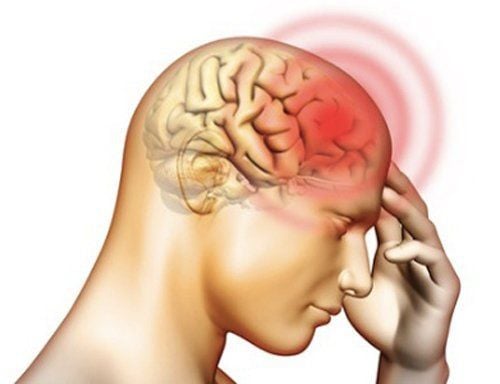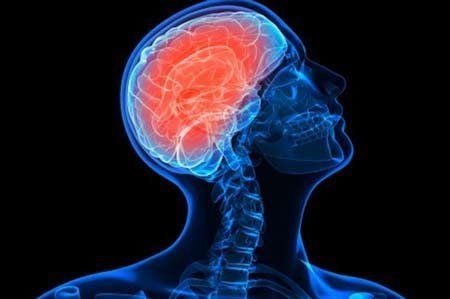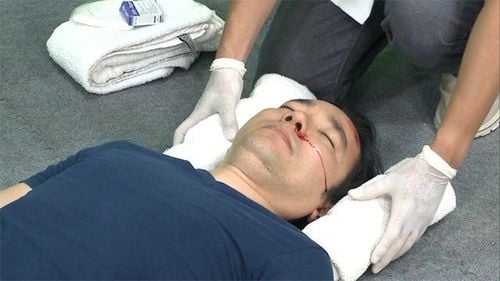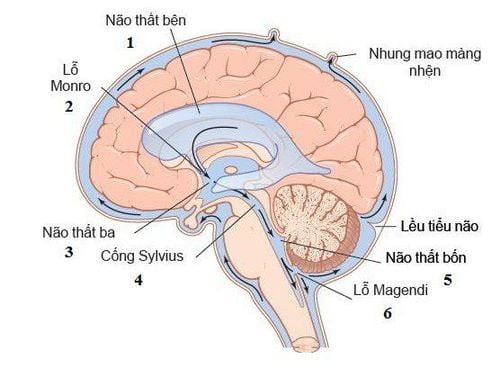This is an automatically translated article.
A traumatic brain injury occurs when the head is hit suddenly and sharply with an object, or when an object penetrates the skull and enters brain tissue. Contusion is a major injury in severe brain injury. If mild, brain contusion will leave sequelae such as epilepsy. If severe, cerebral contusion is often accompanied by most of the intracranial hematoma.1. What is a traumatic brain injury?
Traumatic brain injury (CTSN) is defined as a blow to the head or trauma that penetrates the skull that disrupts normal brain function. Traumatic brain injury can occur when the head is hit suddenly and sharply with an object, or when an object penetrates the skull and enters brain tissue. Symptoms of a traumatic brain injury can be mild, moderate, or severe, depending on the extent of brain damage. Mild cases may cause little change in mental status or consciousness. While severe cases can cause prolonged loss of consciousness, coma, or even death.2. Pathogenesis of traumatic brain injury
There are many factors involved in the pathogenesis of traumatic brain injury such as mechanical factors, dynamic factors of cerebrospinal fluid, vascular factors, neurohumoral factors and nerve impulse factors. .People are interested in 2 mechanisms of trauma: craniofacial and cerebral palsy. Therefore, the mechanical agent is considered the basic factor, the "starter" factor for the pathological processes in the brain to occur.
People are interested in 2 mechanisms of injury:
Head stationary: in case of being hit with a hard object to the head (stoned, hit with a stick...), skull and brain injury (brain contusion or blood loss) agglomeration...) is usually just below the site of the hit and the damage is usually not very complicated. Except for the case of being hit in the occipital region, the patient can die immediately after the injury. Head movement: in the case of a fall due to a traffic accident or a fall from a height... skull and brain injuries are often severe and complex. When falling, the head movement accelerates, when the head touches the road, it is stopped and decelerated suddenly, so the skull changes and deforms immediately leading to skull fracture. When accelerating and decelerating suddenly, the brain in the skull slides on the bone ledges and rotates, twists, and pulls, causing severe and complex brain damage such as large brain contusion, brainstem contusion, and rupture of vessels. blood... In trauma where the head is moved, there is often damage to the contralateral side (contre coup). For example, trauma to the left crown, just below the site of injury, can contusion the brain, but the right parietal region may have a hematoma.

Chấn thương vùng đỉnh đầu bên trái có thể dập não nhưng bên phải có thể có máu tụ.
3. Symptoms of traumatic brain injury
Symptoms vary widely depending on the severity of the head injury, but can include any of the following:Vomiting. Chicken sleep. Headache . Confusion. Lie. Coma, loss of consciousness. Dilated pupils, vision changes (blurred or double vision, inability to tolerate bright light, loss of eye movement, blindness). Cerebrospinal fluid drains from the ears or nose (which may be clear or tinged with blood). Dizziness and balance disorder. Breathing problems. Slow heart rate. Slow breathing, with increased blood pressure. Hearing echoes in the ears, or hearing changes. Difficult perception. Inappropriate emotional response. Difficulty speaking (stammering, incomprehensible and/or slurred speech). Difficulty swallowing. Feeling of numbness or ants crawling on the body. Drooping eyelids or facial muscle weakness. Loss of bowel movements or loss of bladder (bladder) control.
4. Brain contusion is a surgical injury
The term "mass lesion" refers to a localized area of damage that can cause pressure inside the brain. The most common mass-occupying masses associated with traumatic brain injury are hematomas and contusions.A hematoma is a blood clot inside the brain or on the surface of the brain. Hematomas can occur anywhere in the brain. Brain contusion is the contusion of brain tissue. When viewed under a microscope, the area of a brain contusion is comparable to a bruise on the body. Areas of contusion include areas of the brain that are traumatized or edematous, with blood seeping out of an artery, vein, or capillary. Contusion is most commonly found in the basal region of the anterior brain, but can occur anywhere. Cerebral hemorrhage is bleeding within the brain parenchyma, which may be associated with other brain injuries, especially cerebral contusion. The size and location of the bleeding site helps the doctor determine if the hematoma can be surgically removed.
5. Diffuse brain injury

Chấn thương sọ não hay dập não kèm xuất huyết là một trường hợp bệnh lý nặng, phức tạp.
Diffuse axonal damage is associated with functional impairment and progressive loss of some axons - the parts that connect nerve cells in the brain, even though these cells are far apart. If multiple axons are damaged in this way, the nerve cells lose or severely reduce their ability to connect with each other, which can severely disable the patient.
Another type of diffuse damage is cerebral ischemia , ie not enough blood supply to a certain part of the brain. This condition is common in traumatic brain injury patients. That's an important issue because the newly injured brain is particularly sensitive to even a small drop in blood flow. Changes in blood pressure during the first few days after a head injury can also have harmful effects.
Traumatic brain injury or brain contusion with bleeding is a serious and complicated disease, the patient's condition is very critical. Therefore, to avoid this injury, it is necessary to have common sense of precautions such as avoiding leaving things indiscriminately on the floor, stairs, installing window screens to prevent falls, always wearing seat belts every time you drive. car, never drive while drinking or sitting in a drunk driver's car, wear a helmet when riding a motorbike, electric bicycle,...
Vinmec International General Hospital is one of the diseases The hospital not only ensures professional quality with a team of leading medical professionals, a system of modern equipment and technology, but also stands out with comprehensive and professional medical examination, consultation and treatment services; civilized, polite, safe and sterile medical examination and treatment space.
Please dial HOTLINE for more information or register for an appointment HERE. Download MyVinmec app to make appointments faster and to manage your bookings easily.













